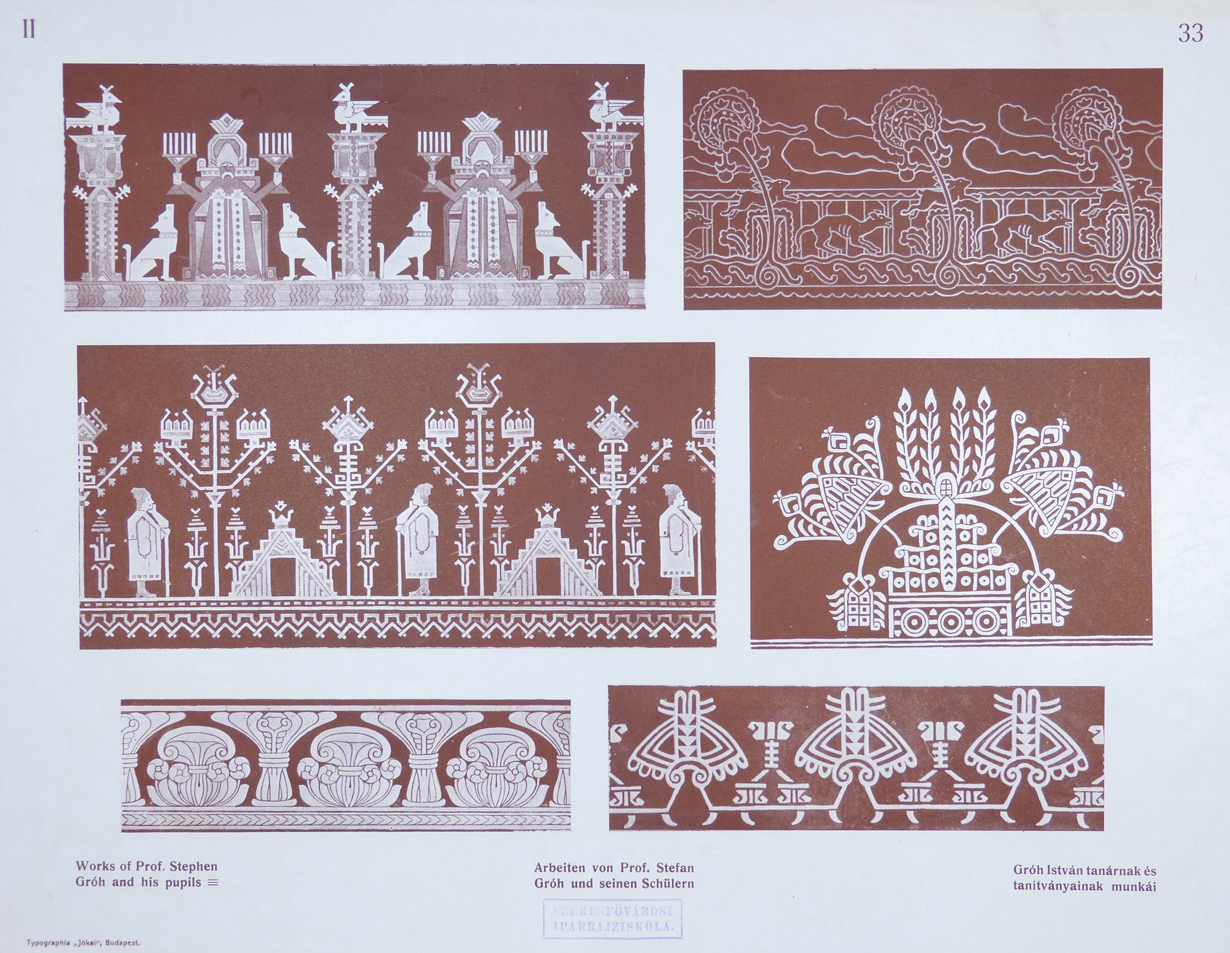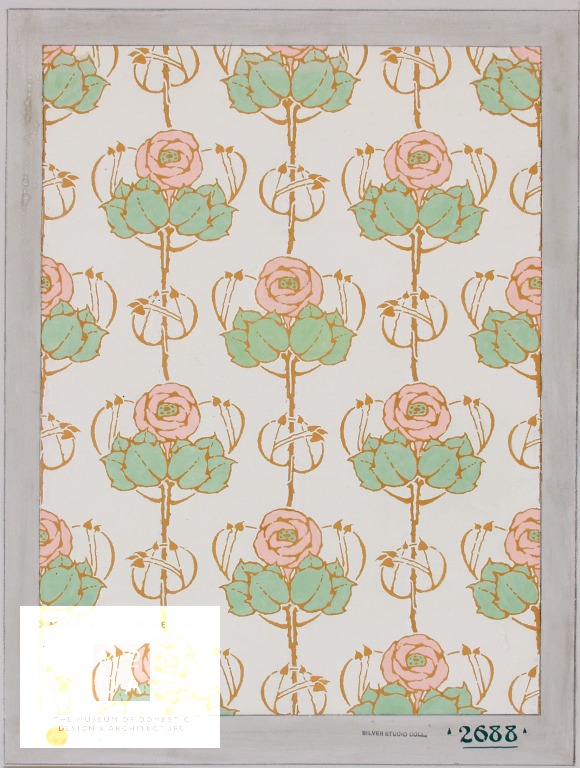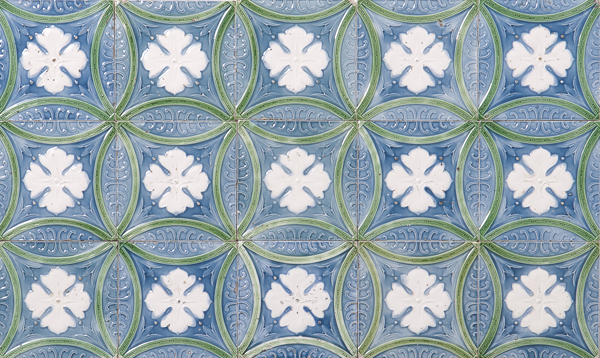#MakewithEuropeana: Art Nouveau patterns

On Europeana Labs, we are constantly seeking to inspire and encourage you to reuse Europe’s shared cultural heritage in new products, businesses and designs. Until the end of 2017, we will organise three campaigns in which we’ll hand-pick cultural objects from our vast online repository and feature them in a dedicated blog series and on Twitter. The first campaign addresses the popular style of Art Nouveau and will run until end of May. The selected items are all suitable for commercial creative reuse and, we believe, can motivate makers everywhere to develop unique concepts.
Daisies, carnations, tulips or poppies represented in a rhythmically repeating pattern. Greatly influenced by nature, Art Nouveau designers created compelling effects by using stylized floral and organic forms in decorative pieces. The sumptuous motifs developed by Art Nouveau’s practitioners have the potential to inspire today’s makers on the look out for new artistic perspectives to evoke through their creations. In this blog, we will direct our spotlight to the beautiful patterns that were applied to pattern books, wallpapers, textiles and tiles.
Pattern books
Analytically precise botanical drawings may sound like unusual inspiration. Nevertheless, Art Nouveau designers found beauty in them and transposed these motifs into design sourcebooks. Swiss-born artist Eugène Grasset (1845-1917) and one of his pupils, Maurice Pillard Verneuil (1869-1942), developed some of the finest sourcebooks of that time. Below, you will find an example of an ornamental print taken from a pattern book. Discover a collection of drawings illustrating plants and their ornamental application in our dedicated Pinterest board.

Umbellated Rush, La Plante et ses applications ornementales, Paris : Librairie Centrale des Beaux-Arts. Maurice Pillard Verneuil. 1896. Schola Graphidis Art Collection, Hungarian University Of Fine Arts - High School Of Visual Arts, Budapest. CC BY-SA
Interestly, these volumes were studied beyond Europe’s fine art and architecture colleges: they were also used in industrial drawing schools across the continent’s major cities, including Vienna and Budapest. On Europeana Labs, we have featured, for instance, a dataset that includes over 100 floral prints showcasing Hungary’s ornamental art from the Art Nouveau movement. An example of one of these designs is displayed below.

Design for Ornamental Motifs in Hungarian Style by István Gróh and His Pupils, 1907. Schola Graphidis Art Collection, Hungarian University Of Fine Arts - High School Of Visual Arts, Budapest. CC BY-SA
Wallpaper and textile designs
Many textile companies produced Art Nouveau motifs, but one of them stood out for its intriguing new patterns. The Silver Studio was an influential textile design studio in the United Kingdom that reflected characteristics from the Arts and Crafts Movement.
The wallpaper design below, for instance, was created for the Silver Studio in about 1900. The pattern uses highly stylised pink roses with green leaves on a pale background. Light coloured wallpapers such as this were popular in living rooms and bedrooms in Britain in the early twentieth century.

Textile design by Silver Studio, 1897-1903. Museum of Domestic Design & Architecture, Middlesex University, CC BY
Another example of textile design created by the Silver Studio is the print below which features sprays of stylised flowers and leaves in shades of green and yellow, arranged in vertical lines. In the late nineteenth century, green and yellow were fashionable colours among British consumers. The popular colour scheme was jokingly known as 'greenery-yallery’.

Textile design by Silver Studio, 1899. Museum of Domestic Design & Architecture, Middlesex University, CC BY
For other textile and wallpaper designs, check out our special Pinterest board.
Ceramic tiles
Other sort of factories also excelled in their Art Nouveau productions and became fashionable at the time. The Sacavém Factory in Portugal is an example. Below, you will find one of the factory’s creations which used the movement’s typical dark colours and floral themes.

Tile Art Nouveau by Sacavém Factory, Portugal, 1900/1920. Aveiro City Museum, CC BY
On one of our Pinterest boards, we highlight a collection of beautiful tiles with various Art Nouveau designs provided by the Aveiro City Museum.
Show us what you #MakeWithEuropeana
We will feature the best examples of makers using Europeana’s Art Nouveau content on Europeana Labs. Share your creation with us! Email us or tweet to us using @EuropeanaLabs and the hashtags #MakeWithEuropeana and #EuropeanaInspires. Stay up to date with future opportunities by signing up to the Europeana Labs newsletter.
